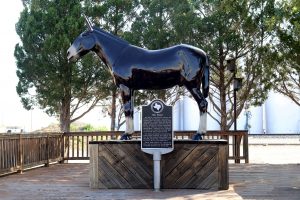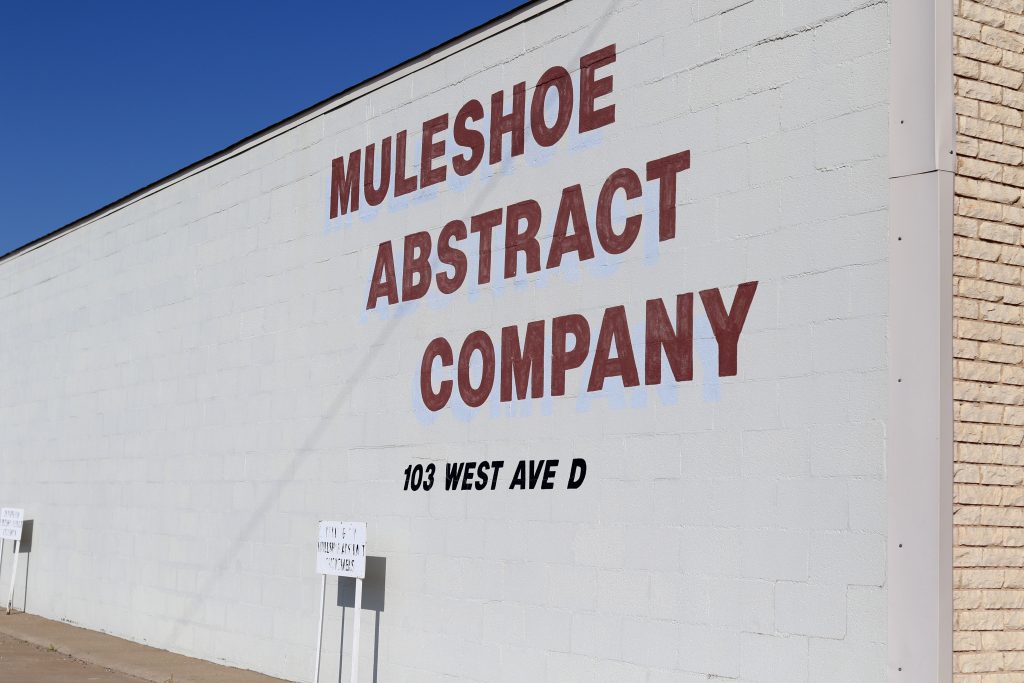Muleshoe Abstract Company is owned and operated by Jeff Actkinson and Marion Rutter of Farwell. Owners of both AARLaw and Farwell Abstract Exchange Company.
Muleshoe Abstract Company provides title and abstract, closing, and escrow services to the residents of Muleshoe, Texas in Bailey County.
About Muleshoe
 Located in Bailey County, Muleshoe, Texas, has a long and colorful history. The town was formally founded in 1913 after the Pecos and Northern Texas Railway built an 88-mile railroad line from Lubbock to Farwell. By 1926, the small stop between the two towns was incorporated as Muleshoe. As the seat of Bailey County, Muleshoe is home to the National Mule Memorial.
Located in Bailey County, Muleshoe, Texas, has a long and colorful history. The town was formally founded in 1913 after the Pecos and Northern Texas Railway built an 88-mile railroad line from Lubbock to Farwell. By 1926, the small stop between the two towns was incorporated as Muleshoe. As the seat of Bailey County, Muleshoe is home to the National Mule Memorial.
The name Muleshoe is traced to Henry Black. Black registered a brand on November 12, 1860 for his ranch and by 1877 had purchased 3 houses on 40,000 acres in Stephens County. Thus, the Muleshoe Ranch came to be. As legend has it, the ranch got the name after Black found a mule shoe buried in the soil. Eventually, Black built a large ranch house, a log schoolhouse, and a small cemetery for family members. This marked the early beginning of the small town on US Highway 84 in West Texas.
On April 23, 1906, the Gulf, Santa Fe and Northwestern Railway Company, and the Pecos and Northern Texas Railway Company merged. The new Pecos and Northern Texas Railway was then chartered to construct a railway between Lubbock and Farwell on the New Mexico border. Starting in 1901 communities along the future railway contributed hundreds of thousands of dollars to construction. By the time the town was officially founded in 1913, residents borrowed the name from the nearby Muleshoe Ranch.
Growth, Stagnation, Expansion
 Once the railroad passed through Muleshoe, expansion occurred rapidly. By 1917, Muleshoe became the county seat, but was not incorporated until 1926. The town continued to grow quickly and by 1930, 800 people called Muleshoe home. Three decades later, it had tripled in population to 3,871. By 1970, Muleshoe reached 5,000 residents, 200 businesses, including two hospitals, two banks, a library, radio station, a newspaper, and more.
Once the railroad passed through Muleshoe, expansion occurred rapidly. By 1917, Muleshoe became the county seat, but was not incorporated until 1926. The town continued to grow quickly and by 1930, 800 people called Muleshoe home. Three decades later, it had tripled in population to 3,871. By 1970, Muleshoe reached 5,000 residents, 200 businesses, including two hospitals, two banks, a library, radio station, a newspaper, and more.
After a short period of economic stagnation, Muleshoe's population began to decrease from 5,048 in 1988 to 4,530 in 2000. However, by 2010 the city had begun to turn that around, growing to a population of 5,158. Today, the town continues to grow at a modest, yet steady pace.
Celebrating the Mule
In the early 1960s, Texas residents decided to build a memorial to the mule. Known for its strength and sparse eating habits, traits important to early pioneers, the mule is something of an icon in West Texas. During times of war, the mule carried cannon; during times of peace, it hauled freight. The small hooves of the mule allowed it to safely and efficiently scale rocky areas. On July 4, 1965, the Mule Memorial was first displayed near the intersection of US 70/84. Muleshoe today is the home of the world's largest mule shoe which can be seen on display at the Muleshoe Heritage Center.




